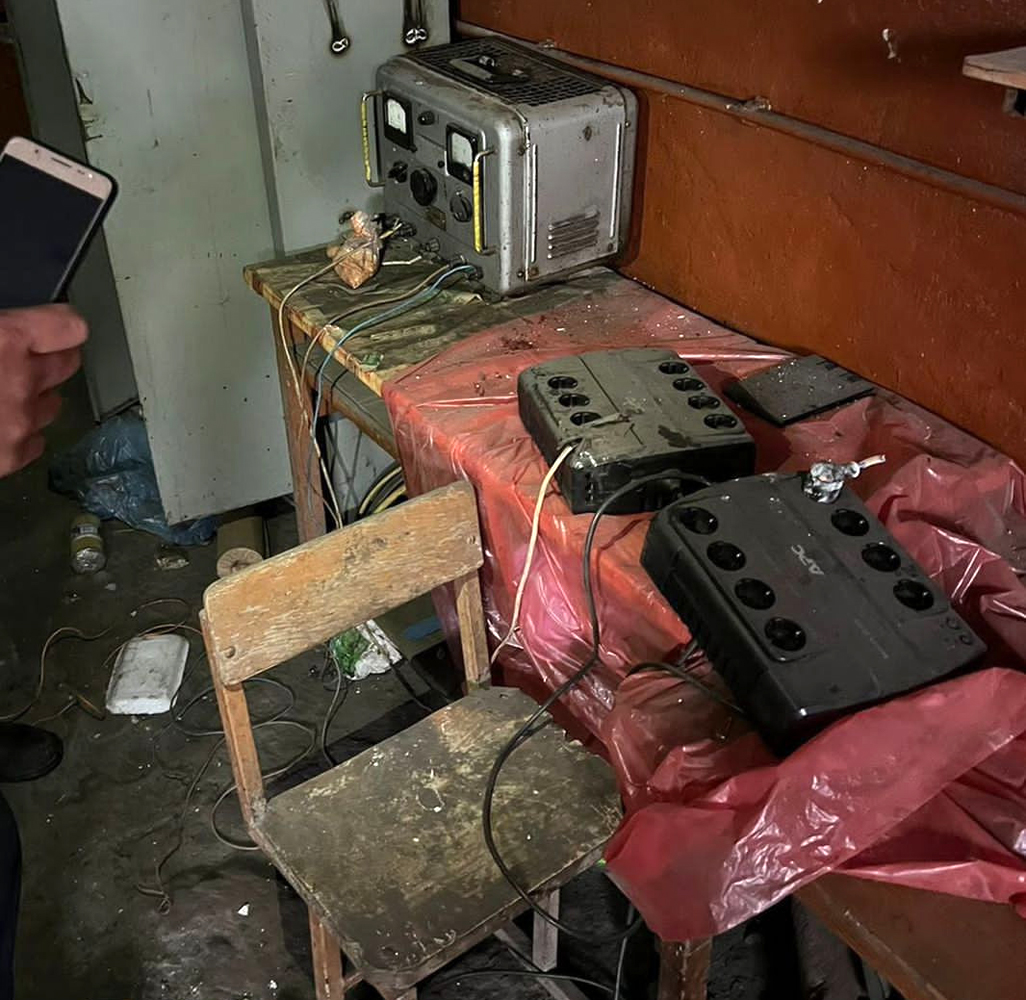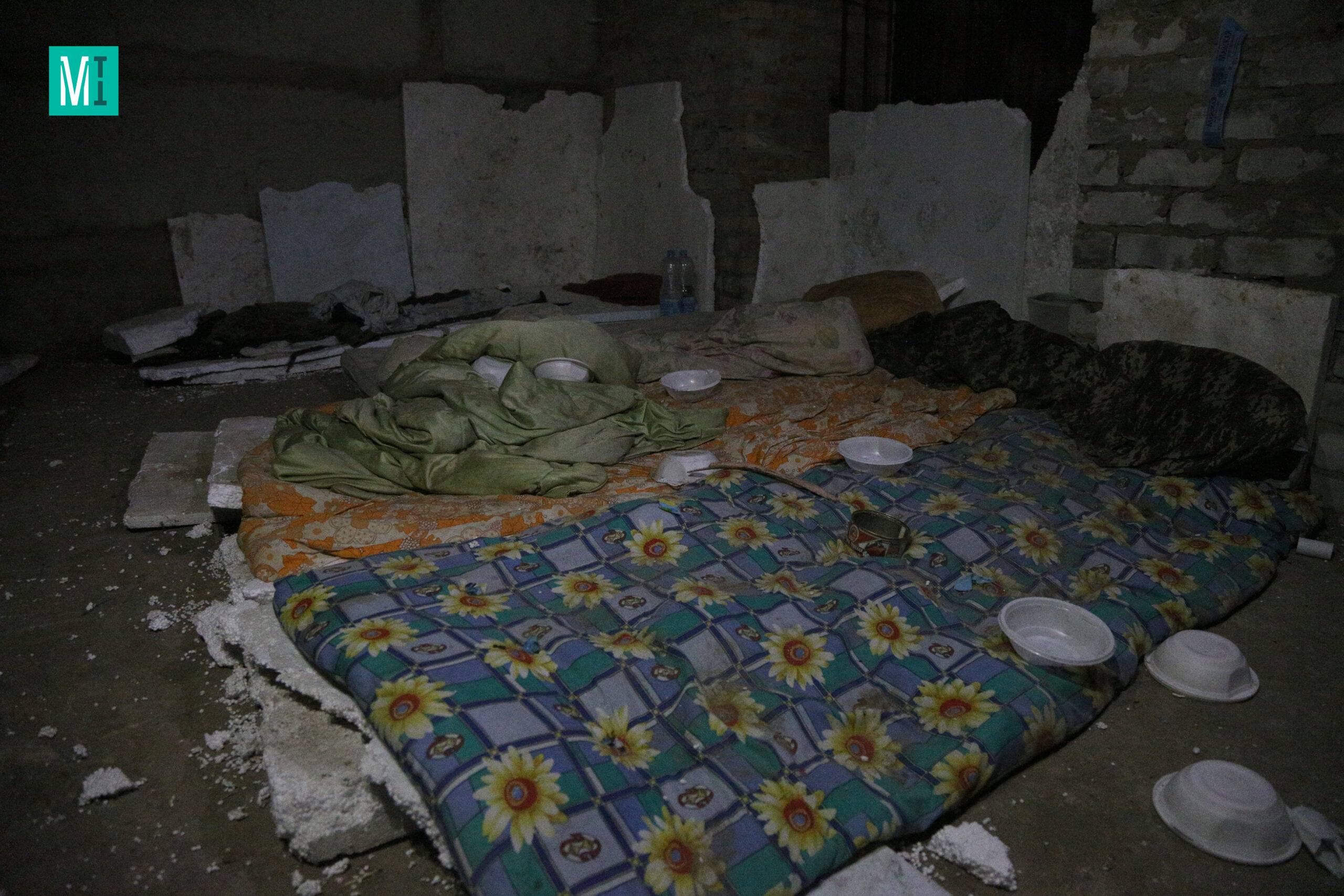Enforced disappearances in Ukraine since 24 February 2022
 Russians used electric shock torture on the imprisoned local inhabitants of Lyptsi village, Kharkiv Region (Ukraine Security Service)
Russians used electric shock torture on the imprisoned local inhabitants of Lyptsi village, Kharkiv Region (Ukraine Security Service)
The International Convention for the Protection of All Persons from Enforced Disappearance
On 17 June 2015, Ukraine ratified the “International Convention for the Protection of All Persons from Enforced Disappearance” (2010). According to Article 2 of the Convention enforced disappearance is considered to be “the arrest, detention, abduction or any other form of deprivation of liberty by agents of the State or by persons or groups of persons acting with the authorization, support or acquiescence of the State”, this crime is then followed by “a refusal to acknowledge the deprivation of liberty or by concealment of the fate or whereabouts of the disappeared person, which place such a person outside the protection of the law.”
The Rome Statute of the International Criminal Court defines systematic enforced disappearances as a “crime against humanity” (Article 7:1 i).
Not all cases of disappearance, we may add, can be interpreted as enforced. The disappearance of an individual is considered to be “enforced” if the person’s whereabouts remain unclear, but it is known that he or she was abducted by the Russian occupation authorities, by Russian soldiers, by Chechen and other fighters and by those in Ukraine who have gone over to the Russian side.
*
The Tribunal for Putin (T4P) Initiative has been documenting all war crimes, crimes against humanity and acts of genocide probably committed by Russia’s forces in Ukraine. In particular, among these international crimes it has been recording all instances of enforced disappearance. As of 19 February 2023, T4P had documented cases of enforced disappearance across ten of the country’s 25 Regions:
|
REGION |
NOS. |
|
SOUTH |
|
|
Kherson |
507 |
|
Zaporizhzhia |
234 |
|
Mykolaiv |
11 |
|
EAST |
|
|
Donetsk (excl. Mariupol) |
9 |
|
City of Mariupol |
2 |
|
Luhansk |
31 |
|
Kharkiv |
143 |
|
NORTH-CENTRAL |
|
|
Kyiv |
19 |
|
Sumy |
13 |
|
Chernihiv |
30 |
|
Zhytomyr |
1 |
Many more thousands of potential cases
In total, T4P has documented one thousand cases that might be given (in accordance with Article 7:1 i of the ICC’s Rome Statute) the preliminary classification of “an enforced disappearance”. The total number of enforced disappearances across Ukraine since 24 February could significantly exceed that figure. The Helsinki Human Rights Union made a formal request to the police for further information. The police reported that between 24 February 2022 and 7 February 2023 (inclusive) it had registered 19,967 statements and reports of persons going missing in particular circumstances. As of 7 February 2023, the great majority (19,635) were still officially missing.
When parts of Ukraine are temporarily occupied, moreover, it seems likely that not everyone will approach law-enforcement agencies to report that their relatives are missing. It is known, for instance, from information gathered from open sources by the Mariupol city branch of the Helsinki Human Rights Union, that at least 165 public announcements have been made about missing relatives. It cannot be determined with accuracy how many such announcements have been made. Nor can their veracity and the circumstances of the disappearance be assessed. It seems likely that some of these reports refer to otherwise undocumented cases of enforced disappearance.
Goals and motives of the Aggressor
Russia engages in the unlawful arrest of individuals in order to establish full control over the population of the occupied territories and to eliminate any potential hotbed of resistance. People are also arrested to enlarge Russia’s ‘exchange pool’, those whom it can treat as combatants in any future exchange for captured Russian servicemen. In some cases, civilians have been deliberately dressed in military uniform to supply the images required by Russia’s propagandist media.
Those frequently found among the abducted and unlawfully detained include:
- Veterans of the 2014-2022 war in east Ukraine (participants in the Anti-Terrorist and United Services Operations); members of their families; rescue workers; former or currently serving police officers; disabled war veterans;
- Directors and other officials of local self-government and State authorities;
- Organisers of pro-Ukrainian rallies and those who took part;
- Journalists, owners of media outlets and prominent figures in local TV, radio and newspapers;
- Priests and religious leaders;
- Teachers and lecturers at every level;
- Directors of industrial enterprises and farm managers.
During interviews, former detainees describe how they were beaten and kicked; struck with rifle butts, hammers, rods and metal tubing (any item the enemy found to hand). They were also subjected to electric shock torture (stun gun), to inflict the maximum suffering. Stab and knife wounds are visible on the bodies of those released from detention.
One way of tormenting exhausted detainees was to make them perform an excessive number of physical exercises; they were also held in unsanitary inhumane conditions without appropriate medical care or sufficient food and drink. They were without access to fresh air in overcrowded cells. The words one victim of enforced disappearance may be heard via this link.

Psychological torment
The psychological pressure or, to be more precise, psychological torment endured by these detainees deserves separate mention. Keeping someone In a state of constant emotional and psychological suffering or anxiety can be classified as “psychological torture”. Kept in a total information vacuum, detainees were constantly “informed” that Ukraine was in retreat and Russia was advancing. No one cared what happened to the detainees, they were told, no one was fighting for them. Many Ukrainian soldiers were surrendering, their captors said: Russia would soon be victorious and western Ukraine would become part of Poland.
The psychological pressure on detainees is enormous. In interviews former detainees commented how difficult it was not to listen or to believe what they were being told.
Illegal places of detention
Based on the evidence of those freed, the Helsinki Human Rights Union has documented various places of detention:
1. In the Zaporizhzhia Region — the so-called commandant’s office in seized police stations; Berdyansk penal colony No. 77; the SIZO or short-term police detention & interrogation centre for the Zaporizhzhia Region; and the district police station in the town of Tokmak.
2. In the Donetsk Region — the so-called commandant’s office in the small towns of Nikolske and Starobesheve and the city of Donetsk; the premises of the Donetsk Department for Combatting Organised Crime; the Donetsk city SIZO (short-term detention & interrogation centre); and the filtration prison at the former Volnovakha penal colony No. 120.
There are a great many more such places of unlawful detention, however. According to the Ukrainian police, for example, at least 25 torture centres were discovered when parts of the Kharkiv Region were liberated last autumn; some of the detainees held there were deported to Russia. The Ukrainian President’s Legation for Crimea reports that activists kidnapped in the Kherson Region were transferred to Crimea where they are being held in Simferopol’s SIZO (detention & interrogation centre) No. 1.
*
Enforced disappearances are among the most common crimes systematically committed in Ukraine, thus far with impunity, by representatives of the Russian Federation. T4P continues to document cases of enforced disappearance in order to present its records before national and international courts. This will form the evidence on which the perpetrators and instigators of such crimes may be brought to justice.